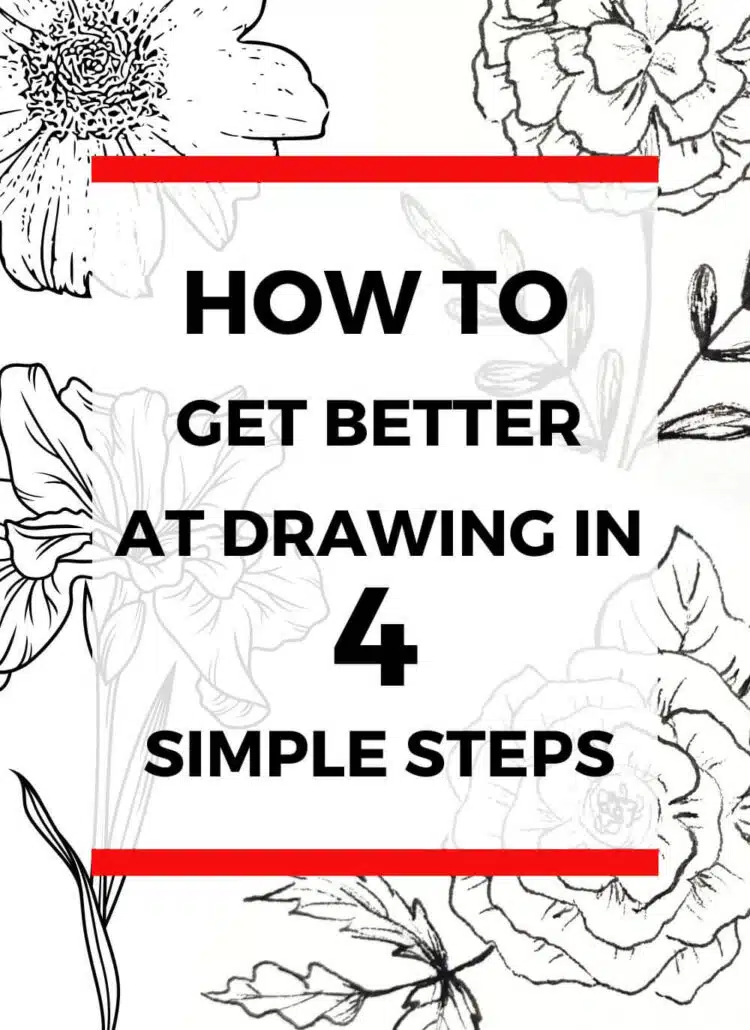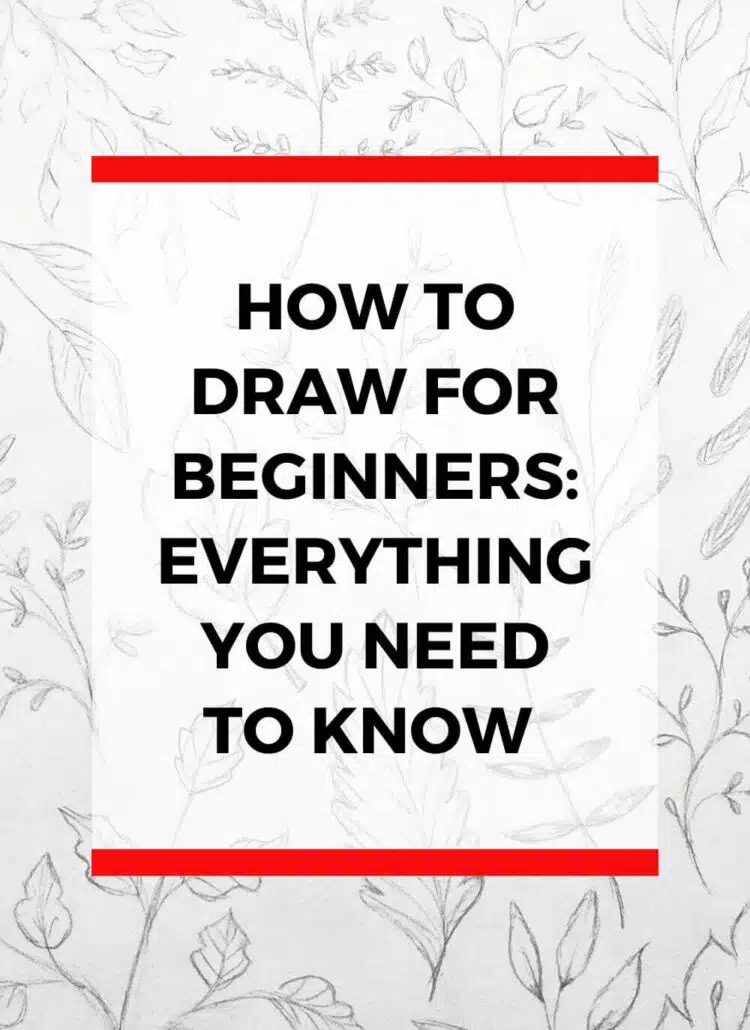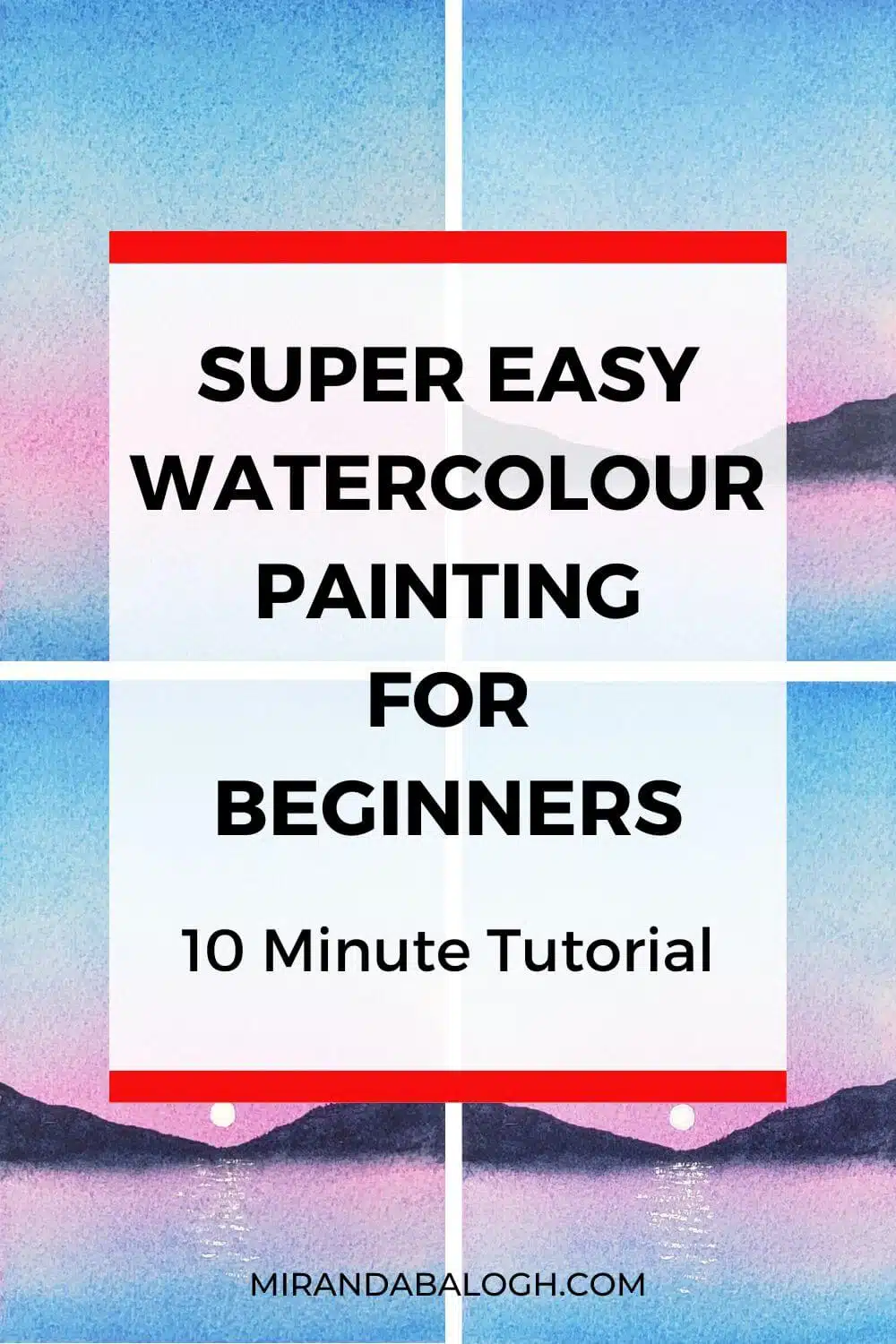Did you know that learning how to paint watercolour florals for beginners is one of the easiest ways to get started with watercolour?
It’s true!
Contrary to popular belief, you don’t have to start by painting realistic flowers. In fact, it’s smarter to first learn how to paint simple flowers.
This way, you can easily render watercolour flowers by breaking them down into simple shapes and brushstrokes.
To accomplish this goal, you’re going to need to learn three basic concepts:
- The shapes of petals, leaves, and stems.
- The simple brushstrokes you need to paint each shape.
- How to properly apply the wet-on-dry technique.
The best part is that once you understand these three basic concepts, you can apply them to paint a large variety of flowers.
DISCLOSURE: This page contains affiliate links. If you make a qualified purchase using any of the links, I’ll earn a small commission at no extra cost to you. I appreciate every sale because it allows me to create free content to promote the growth of this website.
Table of Contents
Materials You Will Need
Before you start, it’s best to take out your watercolour supplies. For this tutorial, you’ll need the following:
- Watercolour paints (I’m using White Nights Watercolour Paints)
- Watercolour brushes (I’m using Silver Black Velvet Brushes)
- Watercolour paper (I’m using Arches Cold-Pressed Paper)
- Mixing palette (I’m using Meeden Porcelain Mixing Palette)
- Masking tape (I’m using Pro Artist Tape)
- 2 jars of clear water
- A cloth or some tissues (optional)
Gather your art supplies, tape your watercolour paper down, and then proceed to the next section.
Step 1: Paint the First Cluster of Leaves
- In a mixing well, dilute the pigment that you’ve chosen for the petals of your flower. In this tutorial, we’re using an orange-yellow mixture. Load up your brush with a 50/50 ratio of paint to water.
- Identify the center of the flower so that you can leave this area white. Then, use the tip of your paintbrush to dab four small petals around this central point using the wet-on-dry technique. Each petal should be curved, somewhat oval in shape, and loosely painted.
- Wait for the layer to dry.

Step 2: Design the Composition
- Use the same technique from step two to create another cluster of petals on the paper. In terms of composition, this second flower should be located below the first flower.
- Then, paint the last flower to the left of the first two flowers. This third flower should be positioned in-between the first two flowers. As well, make sure that there is space between each flower so that none of their petals are touching one another.
- Wait for the layer to dry.
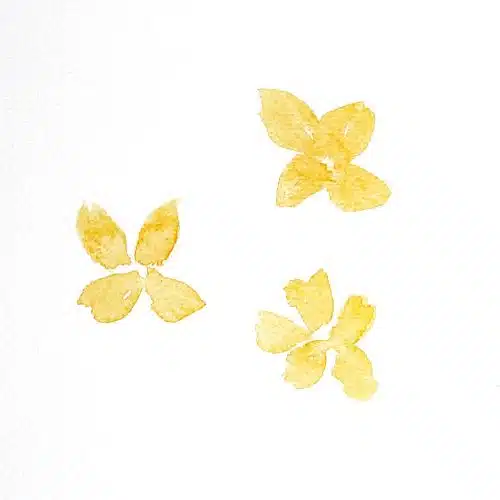
Step 3: Paint the Stems
- Next, rinse off your brush and then dilute some green pigment into the mixing well. Again, load up your brush with a 50/50 ratio of paint to water.
- Use the very tip of your brush to paint thin green lines that start at the base of each flower. These thin brushstrokes represent the flower stems. Carefully pull the bristles down the page until all three stems converge into one.

Step 4: Paint Leaves on the Stems
- Once the stems are painted, you need to add some leaves. There are two ways to paint leaves. The first method is to dab a small amount of paint near the stem and then pull it away from the stem in one simple motion. The second way is to paint two small C shapes that curve together to create an oval leaf shape. Choose whichever method suits you best.
- Wait for the layer to dry.

Step 5: Add Small Details
- Lastly, load up your paintbrush with the pigment you used for the flowers, but make sure the paint to water ratio is 75% percent paint and 25% water. Then, hold your paintbrush vertically and use the tip to stipple a bunch of tiny dots in and around the center of the flower. These seeds should appear darker than the color of the petals.
- Wait for the layer to dry.
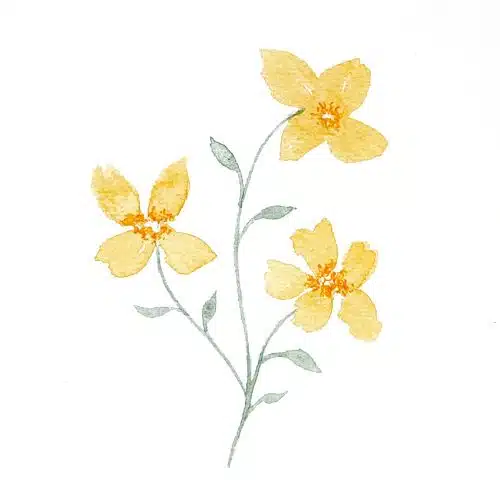
Improve Your Watercolour Flowers: Next Steps
And there you have it!
You’ve successfully learned how to paint watercolour florals. The best part is that it only takes 5 to 10 minutes to paint each flower.
That being said, sometimes it’s hard to know what paint-to-water ratio is needed to paint beautiful watercolour flowers.
Luckily for you, Foxsy has the perfect solution! That means now is the best opportunity to join the Foxsy Watercolor Academy!
This Academy perfectly compliments any watercolour artist who wants to improve their watercolour florals.
Why?
Because when you join the Academy, you get taken on a magical journey that reveals to you the step-by-step roadmap that’ll teach you how to become the watercolour artist of your dreams!
So click the image above to learn more!
This article originally appeared on Foxsy.

Miranda Balogh
Artist & Online Educator



